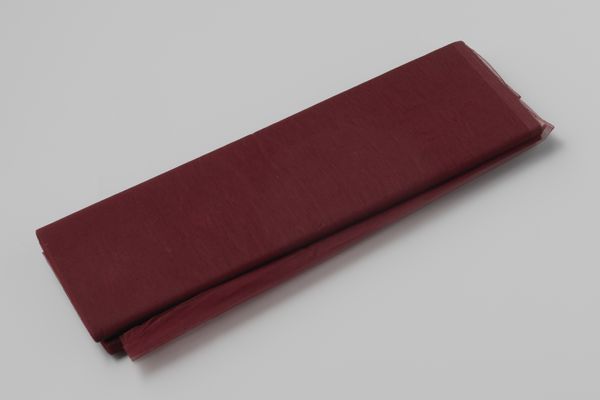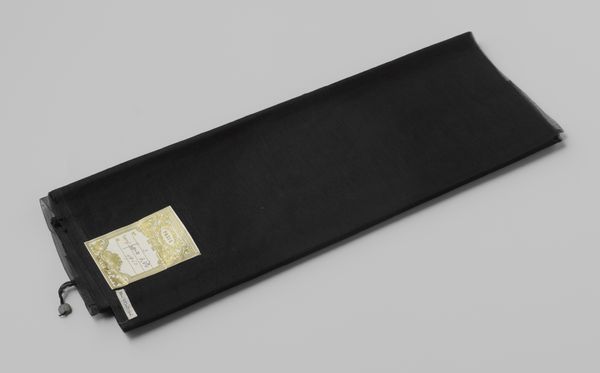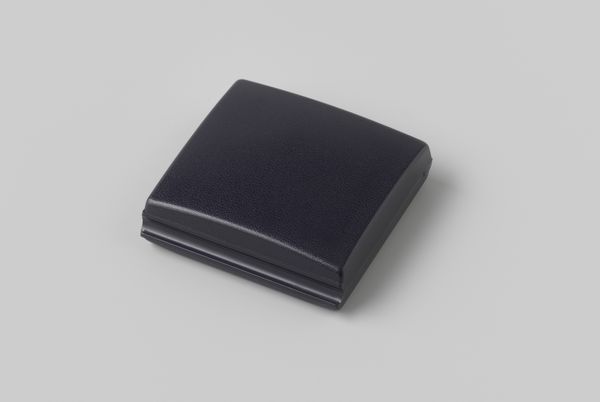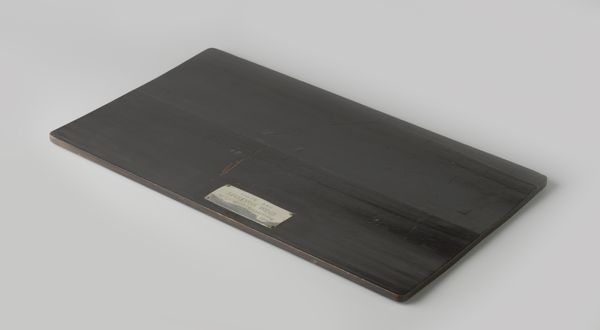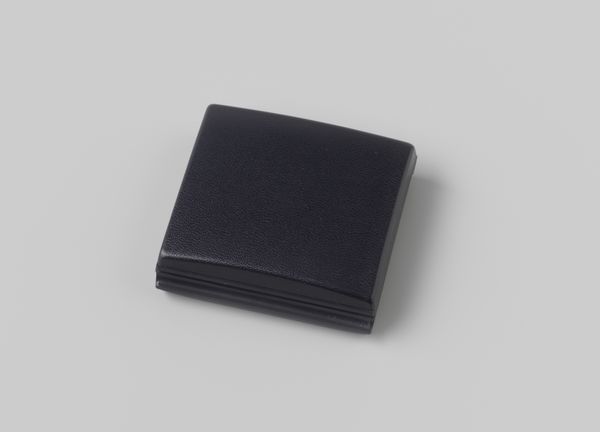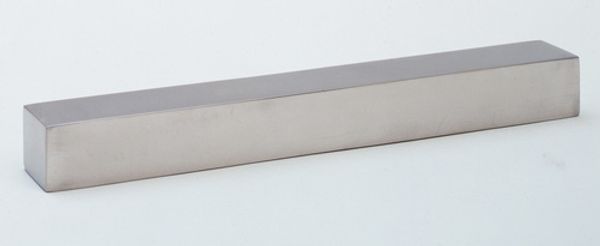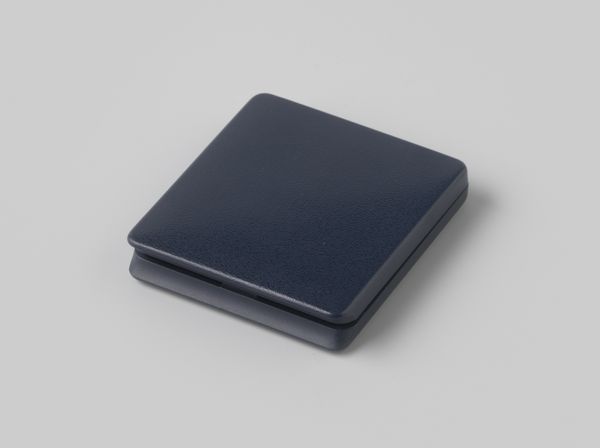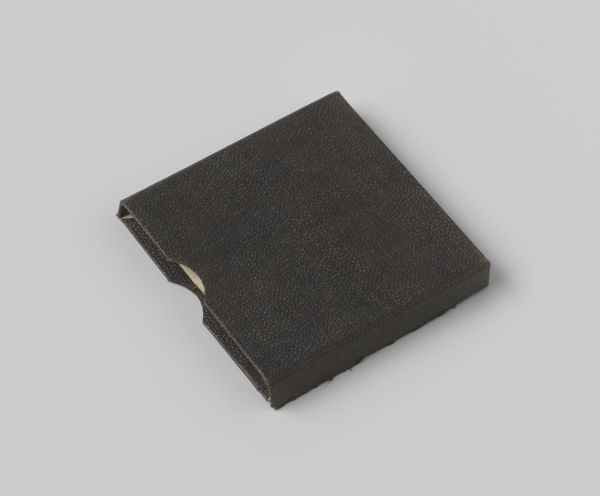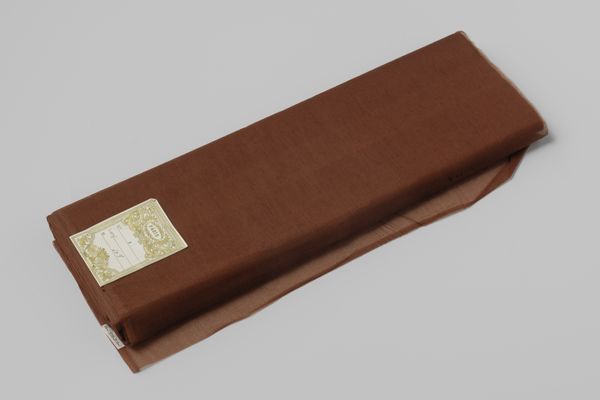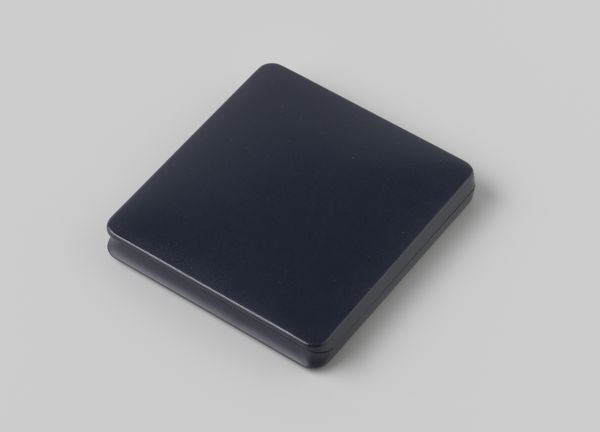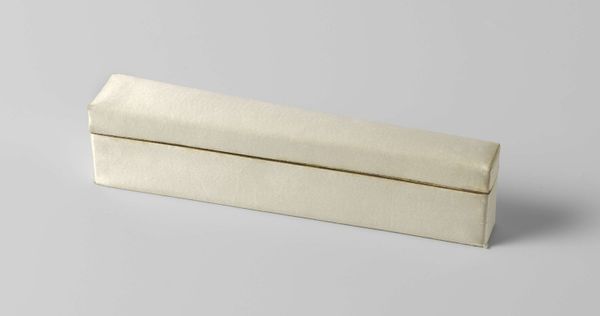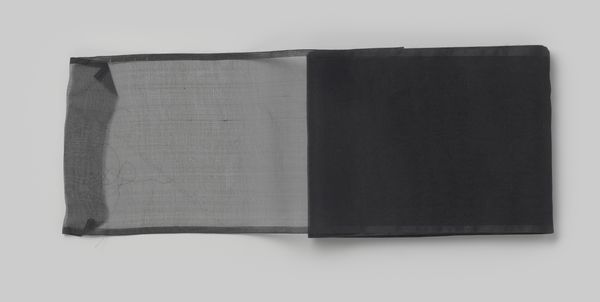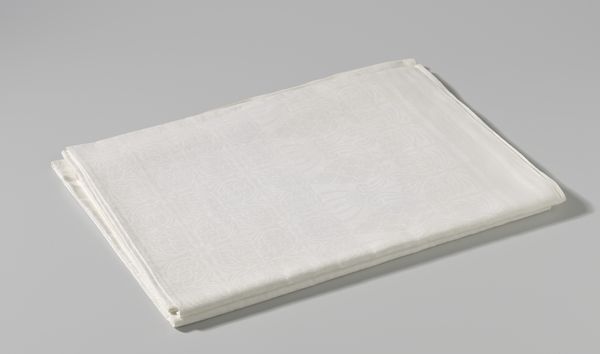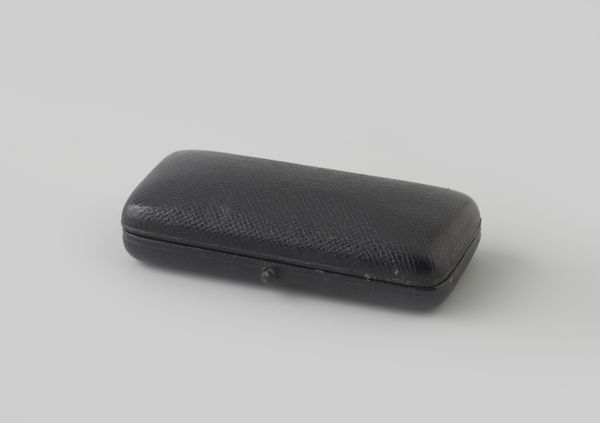
textile, photography
#
textile
#
photography
Dimensions: width 45 cm, length 14.5 cm, height 2.5 cm
Copyright: Rijks Museum: Open Domain
Curator: Well, what strikes me first is the melancholic elegance of it all, a shadowy whisper captured in folds of midnight blue. Editor: That's an interesting take. We are looking at a piece from the Rijksmuseum collection—"Coupon donkerblauw parasolgaas", which roughly translates to "Piece of dark blue parasol gauze," dating from around 1900 to 1925. So, quite literally, it’s a length of fabric, most likely photographed in recent times to become a record in the museum archives. Curator: Yes, that melancholic blue hits you instantly, right? A colour used during the day, offering protection. Editor: Exactly. Parasols during this period weren't simply functional; they were strong markers of social status, protecting the fair skin of the upper classes, avoiding the supposed dangers of a sun tan. This fabric offers protection from sunlight. Curator: And what sort of statement would you be hoping to make with this textile? What kind of sartorial, social statement, were you hoping to achieve by incorporating that darkness in a sun-protection item? Editor: I see the darkness adding mystery, a touch of drama even. And that’s a clever point— the darkness acts like a secret screen or portal in an exhibition on the fashion during those times. The parasol would become the frame, of the artwork: that specific user using that artifact. It makes one wonder about the person who originally chose this fabric for a parasol. It asks the public questions. Curator: Absolutely, who inhabited that shadow? The blue here isn't merely decorative. It hints at emotions, shielding more than just sunlight, you know? Editor: Maybe guarding reputations or carefully crafted appearances too. Think of the rise of photography during this era and how parasols became very popular, because women became photographed so much more. Curator: It is intriguing how an everyday item speaks to the social norms of the moment and to personal, individual tastes, desires. What was the purpose of their shade? A symbol, a screen... It gives an extra layer to your social analysis and opens other interpretive possibilities! Editor: Precisely. It shows how items, however commonplace, can illuminate hidden corners of history, if we just pay close enough attention. Curator: Agreed. And it serves as a potent reminder that history is made, woven, thread by thread. Editor: A beautiful thought to take away.
Comments
No comments
Be the first to comment and join the conversation on the ultimate creative platform.
